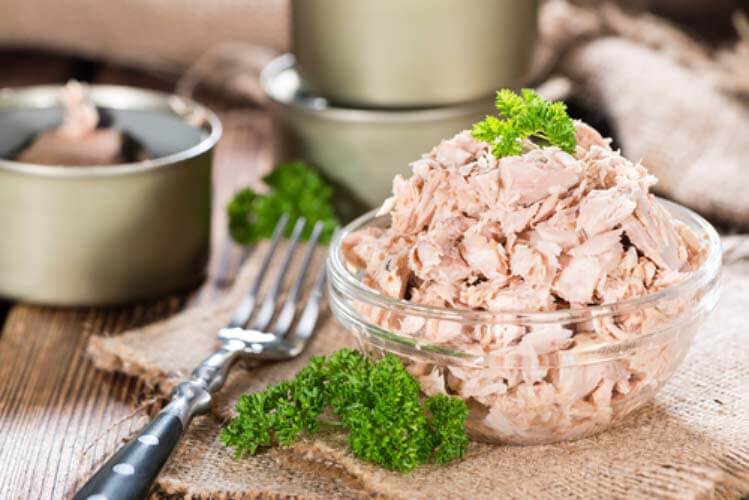
Tuna is one of the most popular canned fish choices around the world. The great taste, health benefits, and convenience offered by a can of tuna are hard to deny. Next time you go to buy this canned deliciousness, consider these five tips to ensure you get the best price and the best fish possible.
1. Oil vs Water
Believe it or not, the oil or water surrounding the fish when canned can make a difference. Tuna packed in water will contain fewer calories and less fat but also allows for the loss of omega 3 fatty acids to occur. Water-packed also dilutes the natural juices and flavors contained within the fish and can lead to a more rounded and less refined taste.
Oil-packed fish is typically packed in vegetable or soy oil and helps to trap vital nutrients deep within the fish where they can be unlocked by your body during digestion. While not the healthiest canned fish option, oil-packed canned fish seals in every last drop of flavor to keep your meal as delicious as possible.
2. The Fishing Method Makes a Difference
A great deal controversy has stemmed from the fishing practices employed to harvest tuna. From indiscriminate long-line operations to giant nets that harvest thousands of fish each day, these types of fishing practices are harmful to populations of fish that help keep the ecosystem healthy and vibrant. The overharvesting of our fisheries has a serious impact on the overall health and stability of the oceans. As time has passed we’ve seen a number of species fished to near extinction.
Responsible fishing companies are continuing to work with more wisely managed and sustainable populations such as the skipjack tuna. With a shorter growing cycle, the skipjack reaches maturity much more quickly than larger varieties and are able to be replenished with less time. By targeting the skipjack, other populations of fish are able to regain stability as their numbers grow.
3. Read the Label
It’s almost impossible to find a predatory fish that doesn’t contain mercury. While most of the fish we eat today contain methyl-mercury, tuna falls on the higher end of that spectrum. Not all tuna fish are the same, however, as there are more than two dozen varieties of fish that can be considered “tuna.” It’s important to read the label and look for any species-specific information or clues that may be given about the type of fish inside.
Larger tuna like the Yellowfin and Albacore, commonly referred to as “White” tuna, grow slowly and take years to reach the age of maturity. The amount of mercury within a fish increases as time goes by and so, larger fish contain more mercury than smaller fish. The Skipjack tuna, often referred to as “Light” tuna, reaches maturity much more quickly than its bigger cousins. Since they live for a shorter period of time, less mercury is able to build up within their muscle tissue. When it comes to mercury content in seafood, skipjack tuna is one of the healthiest canned fish options available.
4. Are Pouches Better Than Cans?
Plastic tuna pouches are lightweight and convenient, especially when you don’t have a can-opener handy, but the added expense of that flashy packaging can add up quickly. Because there are no rigid sides to protect the fish inside, a long day on the town or on a hike can quickly turn your tuna to mush.
Cans, however, are cheaper and protect the texture and integrity of the chunks or slices found inside. With an average shelf life of 4 years, expect your canned fish to last a bit longer on the shelf than packet versions. Beware of the cheapest canned varieties though, as the materials they use for canning are often substandard and may be harmful to your health. The safest canned tuna is packed in BPA-free containers and should be clearly labeled as such. Some canned tuna brands even incorporate a pop-top lid for easy access with no can opener needed.
5. Consider the Source
The laws regarding seafood labeling don’t always serve the needs of the consumer. Less-reputable companies often try to hide behind deceptive labeling tactics that serve to mislead and confuse rather than educate and inform. It’s essential to do a fair bit of research if you want to make the most informed choice possible. Be sure to consult available guides designed for consumers and don’t be afraid to reach out to a company and ask them questions directly, either. Often, reputable companies are happy to talk about their products while the ones you want to avoid can be quite difficult to reach at times.
For over a hundred years, the cold and nutrient-dense waters off the coasts of Europe have produced some of the world’s healthiest canned fish. Known for their sustainable fisheries and a careful dedication to quality, Europe continues to set the bar for premium seafood products. At LaRuche Brand Foods, we have long been the most valued and trusted importer of fine European seafood. As a leader and pioneer, we’ve created many health and safety standards found within the seafood industry today. Recognized by many government bodies around the world for our commitment to excellence, LaRuche Brand Foods represents a commitment to both the consumer and a quality product not found elsewhere. For the very best in Fine Imported European fish, be sure to contact us today!
